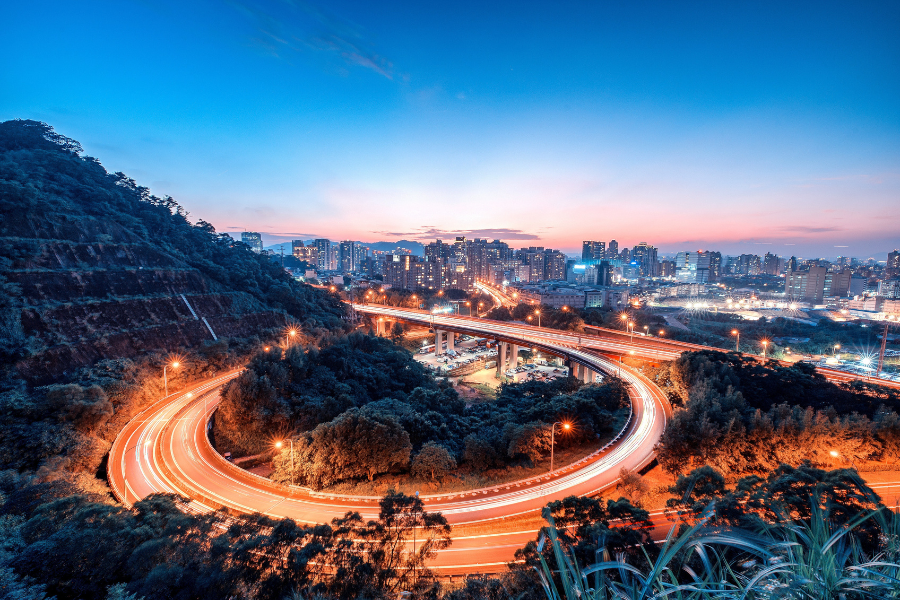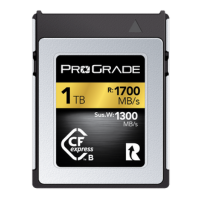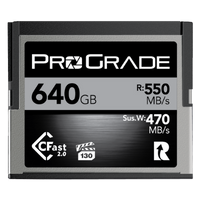Welcome to the second installment of our two-part series, where we delve deep into the enchanting realms of motion control and stop motion animation. If you missed part one, exploring the mesmerizing world of motion control, you can catch up here.
In this article, part two, we unveil the magic of stop motion animation. It’s a captivating technique that breathes life into inanimate objects, allowing them to tell stories and evoke emotions in a way that is truly one-of-a-kind. These stories will transport your audience into a world that exists between reality and imagination. So, if you’re ready to push the boundaries of your creative expression and breathe life into your imagination, keep on reading.
Exploring Stop Motion Animation: A Unique Visual Narrative
Stop motion animation is a captivating technique that brings inanimate objects to life through a series of meticulously captured frames. It involves the art of manipulating objects or models, capturing a frame, making slight adjustments, and repeating the process to create the illusion of movement when the frames are played in sequence. The charm of stop motion animation lies in its tactile nature and the ability to breathe life into ordinary objects, captivating viewers with its unique visual appeal.
Unlike traditional animation techniques that rely on drawings or computer-generated imagery, stop motion animation offers a distinct aesthetic and a tangible connection to the real world. It showcases the magic of practical effects and the art of crafting, as each frame is meticulously crafted and staged, revealing the handcrafted details and imperfections that give the animation its charm.
Stop motion animation offers a wide range of creative possibilities, allowing you to tell stories, create whimsical characters, or explore abstract concepts in a visually engaging way. Whether you’re working with clay, puppets, everyday objects, or even food, stop motion animation invites you to unleash your imagination and create a unique visual narrative that captures the hearts and minds of your audience.
The appeal of stop motion animation lies in its ability to transport viewers into a world that exists between reality and imagination. It elicits a sense of wonder and curiosity as inanimate objects come to life and perform actions that defy their ordinary nature. The meticulous attention to detail, combined with the charm of imperfections and subtle movements, adds a sense of authenticity and warmth that resonates with audiences of all ages.
Mastering Stop Motion: Advanced Techniques for Captivating Animation
You can explore a range of advanced effects to enhance your stop motion animations. These effects include water splashes, explosions, dust particles, simulated fire, or even fabric manipulation. By carefully incorporating these elements into the animation, you can add realism, depth, and visual impact to your stop motion sequences, elevating the overall storytelling experience and captivating the audience.
In this article, not to complicate matters, we will focus primarily on smoke effects. However, the same approach and methodology applies to other effects as well.
Stop Motion Smoke Effect: The Goal
Throughout the animation, the smoke will appear to move and evolve, giving the illusion of continuous motion. The rest of the elements in the frame, such as characters or objects, can remain relatively still or follow their predetermined animation sequences. The focus is primarily on capturing the gradual transformation and movement of the smoke as it develops throughout the animation.
The smoke may gently billow and waft through the frame, creating a sense of movement and depth. It can form graceful wisps, swirling tendrils, or thick clouds, depending on the desired effect. The smoke may have a soft, diffused appearance with a slightly hazy and translucent quality.
The interplay of light and shadow adds depth and texture to the smoke, accentuating its ethereal nature. When illuminated, the smoke may reveal subtle gradations of color, ranging from pale gray to smoky white or even tinged with hues of blues or purples. The intensity and density of the smoke can vary from a light and wispy presence to a dense and voluminous presence that fills the frame. Again, it depends on the effect you desire.
Overall, the use of smoke in stop motion animation can create an atmospheric ambiance, add a touch of mystery, and enhance the visual impact of your scenes. It brings a sense of movement, depth, and intrigue to the animation, captivating the viewer with its mesmerizing and visually striking presence.
Stop Motion Smoke Effect: Creating the Effect
- Frame 1: Begin by setting up your scene without any smoke present. Capture the initial frame, showcasing the characters, objects, or set elements as they are before the smoke effect is introduced.
- Frame 2: In the next frame, start introducing the smoke effect. Gradually add a hint of smoke or wisps within the frame, representing the initial stage of the smoke effect. Pay attention to the placement and appearance of the smoke to achieve the desired visual effect.
- Subsequent Frames: As you progress through each subsequent frame, carefully manipulate the smoke element within the frame. Make incremental adjustments to the position, shape, and density of the smoke. This can involve adding more smoke, shaping it, or repositioning it within the scene. Take your time to achieve the desired progression and movement of the smoke.
- Final Frames: In the final frames, capture the completed smoke effect. Depending on your vision, the smoke may have spread throughout the frame, creating a dense cloud, or it may be concentrated in specific areas for a more selective effect. Each frame should showcase the progression and movement of the smoke, capturing changes in its shape, density, and position.
The next step is to combine the frames you captured to create a fluid and seamless animation sequence:
- Import Frames: Import the individual frames of your stop motion animation into the editing or animation software. Ensure they are arranged in the correct order to maintain the continuity of the animation.
- Set Frame Duration: Determine the duration for each frame to establish the desired timing and pacing of your animation. This will depend on the frame rate you intend to use (e.g., 24 frames per second, 30 frames per second).
- Sequence Alignment: Align the frames in sequence, ensuring that there are no gaps or overlaps between frames. This step helps create a smooth and continuous flow of motion.
- Preview and Adjust: Preview the animation sequence to check for any inconsistencies, gaps, or errors. Make any necessary adjustments to timing, transitions, or effects to refine the animation’s visual flow.
- Add Effects and Transitions: Enhance the animation by adding visual effects, transitions, or additional elements such as titles or background music. These elements can further enhance the storytelling and visual appeal of your stop motion animation.
- Export the Final Animation: Once you are satisfied with the final result, export the animation as a video file or in a format suitable for your intended output.
Remember to experiment, review, and fine-tune your animation during the editing process to ensure the desired visual impact and storytelling effect. With patience and attention to detail, you can create compelling and captivating stop motion animations that captivate and delight your audience.
Gear Up: Equipment and Software Recommendations for Stop Motion Animation
To fully explore and excel in the advanced techniques of motion control and stop motion animation, having the right production equipment is essential. Here are some equipment recommendations that cater to a range of budgets, helping you achieve professional-quality results:
1. Motion Control Systems
Motion control systems play a vital role in executing precise camera movements for motion control and adding dynamism to your animations. Consider the following options:
- Professional Grade: For advanced motion control capabilities, consider systems like the Kessler Crane Second Shooter, the eMotimo Spectrum ST4, or the Rhino Camera Gear ARC II. These systems offer motorized sliders, pan-tilt heads, and programmable motion control features, enabling you to achieve intricate camera movements with precision.
- Mid-range: If you’re on a mid-range budget, options like the Edelkrone SliderPLUS series provide reliable motorized sliders with programmable features. They offer smooth camera movements and can enhance the visual appeal of your motion control shots.
- Budget-friendly: For those with a limited budget, manual sliders like the Neewer Carbon Fiber Camera Slider can still deliver smooth camera movements. This slider may not have automated motion control features, but it offers stability and versatility for your motion control shots.
2. Lighting and Effects
To enhance the visual impact of your animations, consider investing in lighting equipment and practical effects tools. Here are some recommendations:
- Lighting Kits: For professional-quality lighting, consider versatile LED lighting kits like the Aputure Light Storm series or the Godox SLIII series. These kits offer adjustable color temperature, intensity controls, and various lighting modifiers, allowing you to create desired lighting effects and set the mood for your animations. You may also find the following two articles helpful: Guide to Understanding Lighting Ratios and Master Photography Lighting: Secret to Creating Astonishing Images.
- Practical Effects Tools: Experiment with practical effects tools such as smoke machines, water rigs, or miniature explosions to add realism and visually striking moments to your animations.
Pay attention!!! When incorporating miniature explosions as a practical effect in your animations, it is crucial to prioritize safety at all times. Always follow proper guidelines and exercise caution when working with explosive materials or pyrotechnics. Ensure you have the necessary knowledge, training, and permits required to handle such effects. Additionally, consider using safe alternatives or consulting with professionals experienced in practical effects to achieve the desired visual impact while minimizing risks. The safety of yourself, your team, and your environment should always be the top priority when working with any potentially hazardous elements.
3. Animation Software
For post-production and animation editing, using specialized software can streamline your workflow and enhance the final result. Consider the following animation software options:
- Professional Grade: Software like Dragonframe is widely recognized in the stop motion animation industry for its advanced features, including frame-based editing, onion skinning, and multi-axis camera control. It provides precise control and extensive tools for creating seamless animations.
- Mid-range and beginner-friendly: If you’re on a mid-range budget or just starting out, software like Stop Motion Studio or iStopMotion offers user-friendly interfaces, basic editing capabilities, and frame-by-frame controls, allowing you to create stop motion animations with ease.
Keep in mind the equipment and software you choose should align with your specific needs, budget, and level of expertise. Conduct thorough research, read reviews, and consider seeking advice from experienced animators to make informed decisions.
Conclusion: Pushing Creative Boundaries with Advanced Techniques
Congratulations! By reading this article, you’re now among a very small percentage of your peers who have a comprehensive understanding of stop motion animation. So, embrace the knowledge gained from this article and set your imagination free.
As you embark on your creative journey, remember to experiment fearlessly. Don’t be afraid to think outside the box and push the boundaries of what’s possible. Take risks, try new techniques, and refine your skills. Each project presents an opportunity for growth and discovery.
Remember, mastering this advanced technique requires time, practice, and patience. Embrace the learning process and celebrate the progress you make along the way. Be open to inspiration from your surroundings, fellow artists, and your own experiences. Allow your unique voice and vision to shine through in every frame. So, gather your gear, unleash your creativity, and embark on an extraordinary journey of visual storytelling.
Ready to embark on your stop motion journey with unrivaled creativity and precision?
Elevate your craft with ProGrade Digital memory cards and workflow readers. Experience lightning-fast speeds, unmatched reliability, and ample storage capacity to capture every intricate detail of your stop motion animations. Upgrade today and unleash the true magic of your creative vision.





